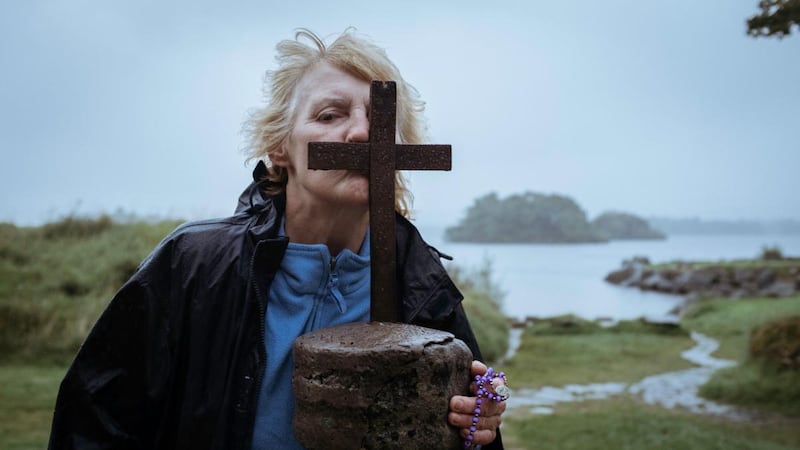The biggest surprise comes right at the start of Turas Cosnochta (Monday, 7.30pm), RTÉ One's engaging if rather disposable reappraisal of the ancient pilgrimage site of St Patrick's Purgatory in the context of, among other things, the 21st-century mindfulness movement.
Out of the aching blue waters of Lough Derg, in Co Donegal, loom the forbidding flanks of St Patrick’s and its cloisters, like an Alcatraz for the soul. Yet far from the forbidding conspiracy of spires and naves that might be expected, the purgatorial palace twinkles gorgeously in the gentle summer light.
Whether this speaks to the inherent handsomeness of the sprawling island complex or the fact that everything looks prettier shot from above by drone is hard to say. But it sets the tone for a charming, not especially probing survey of the Lough Derg pilgrimage and its position in a contemporary Ireland beginning to have a conversation about the place of spirituality, as opposed to religion, in everyday life.
Three days of reflection, with some mild suffering chucked in for good measure, has an obvious appeal in this era of smartphone addiction and social-media overload
Airing amid criticism of RTÉ's Irish-language output – there simply isn't enough of it, argues the official language commissioner – Turas Cosnochta (which Google translates as Walking Tour) wears its public-service remit lightly (as well it might, given it has just been aired by BBC Northern Ireland under a different title, Oilithreacht). It has no grand thesis to argue. Instead, this is an overview of the tradition of pilgrimage to Lough Derg and how it challenges and changes those submitting to its rigours. (Shoes are forbidden, fasting is mandatory, and the fun starts with a 24-hour vigil.)
Alas, the documentary falls down in other ways. Several priests are interviewed. And we follow pilgrims shuffling around a church, rosaries swinging beneath their fingers. So Catholicism is clearly woven into the fabric of Lough Derg, no matter that the clerics emphasis the “holistic” underpinnings of the experience. Yet the young people we meet appear to have been drawn by a very contemporary spiritual curiosity rather than boiled-in-the-bag Irish religiosity. Are they practising Catholics? If so, is it a challenge to be public with their faith among friends and colleagues? If not, why are they here?

To that point, what does St Patrick’s Purgatory offer the nonbeliever? Three days of reflection, with some mild suffering chucked in for good measure, has an obvious appeal in this era of smartphone addiction, social-media overload and a culture trying to distract us at every turn. But does Lough Derg welcome, or even tolerate, agnostics? As Ireland has detoxed from religiosity, how has the pilgrimage met the challenge of changing times? These questions seem to linger.
The most powerful story is that of Michaelina, who has come to Lough Derg to process her grief after the recent death of her grandmother. It is easy to identify with her. She has accidentally brought along a forbidden bar of chocolate, and in the pangs of hunger she forgets she is supposed to be speaking Irish. In the final scene she confesses to having had a difficult year and clearly regards the pilgrimage as a light in the dark. With luck we will hear more from her in part two.













